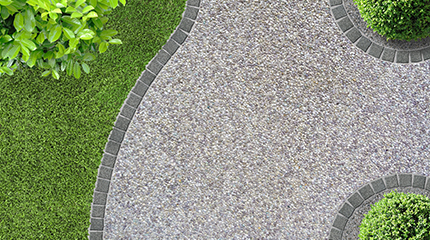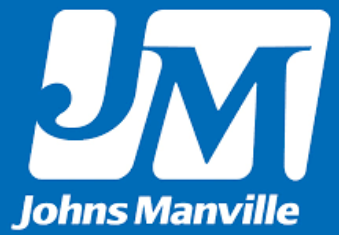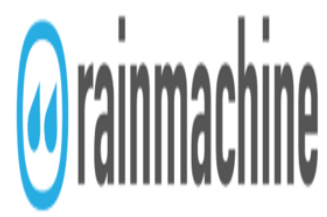OUR EXPERTS SPECIALIZE IN PERMEABLE PAVERS
Cool Remodeling Experts specialize in installing Permeable Pavers that can provide you and your family with the following important benefits:

- Stop wasting your money on constantly increasing utility bills.
- Maximum energy performance efficiency in your home.
- Maximum comfort for you and your family at home.
- Highest level of product quality, efficiency and reliability.
- Well-known brands supported by local product distributors.
- Best product and service warranties supported by manufacturers.
- Low product acquisition and maintenance costs.
- Product rebates and Federal Tax Credits whenever applicable.
- Best product and service value for your money.
- Best return on your long-term investment.
- Peace of mind knowing that you do the right thing.
Did You Know That Water Rates In The U.S. Increase At About 6% - 10% Per Year?

PRODUCT INTRODUCTION
Many homeowners install Permeable Pavers to become more water-efficient and create eco-friendlier environment.
Installing permeable pavers is an important investment to ensure your overall Home Water Efficiency.
Before installing permeable pavers, be sure to speak with a Water Efficiency Consultant about the current level of your home water efficiency.
The water efficiency consultant will help you to identify all areas of water inefficiency in your house and potentially save you tens of thousands of dollars in the future.

Cool Remodeling YouTube® Video Library
© 2024 Copyright Owned By The Video Publisher
WHAT IS WATERSENSE®? © 2024 The U.S. Environmental Protection Agency
WaterSense®, a voluntary partnership program sponsored by the U.S. Environmental Protection Agency (EPA), is both a label for water-efficient products and a resource for helping you save water.
WaterSense® partners with manufacturers, retailers and distributors, homebuilders, irrigation professionals, and utilities to bring WaterSense® to your community.

Cool Remodeling YouTube® Video Library
© 2024 Copyright Owned By The Video Publisher
THE WATERSENSE® LABEL © 2024 The U.S. Environmental Protection Agency
The WaterSense® Label makes it simple to find water-efficient products, new homes, and programs that meet EPA’s criteria for efficiency and performance.
WaterSense®-labeled products and services are certified to use at least 20% less water, save energy, and perform as well as or better than regular models.
Once you start using the WaterSense®-labeled products, you will enjoy substantial savings in your water bills as a direct result of reduced water consumption in your house.

Cool Remodeling YouTube® Video Library
© 2024 Copyright Owned By The Video Publisher
WATERSENSE® PRODUCTS © 2024 The U.S. Environmental Protection Agency
WaterSense® makes it easy to identify and select WaterSense® Products which include many water–efficient products that can help your wallet and the environment.
According to WaterSense®, products bearing the WaterSense® label:
- Perform as well or better than their less efficient counterparts.
- Are 20% more water efficient than average products in that category.
- Realize water savings on a national level.
- Provide measurable water savings results.
- Achieve water efficiency through several technology options.

Cool Remodeling YouTube® Video Library
© 2024 Copyright Owned By The Video Publisher
WHAT IS A PERMEABLE PAVEMENT?
Permeable Pavement, also known as Pervious or Porous Concrete, is a specific type of pavement with High Porosity that allows rainwater to pass through it into the ground below. Through this movement, pervious concrete mimics the natural process that occurs on the ground’s surface, consequently reducing runoff and returning water to underground aquifers. It also traps suspended solids and pollutants, keeping them from polluting the water stream. Pervious concrete has many applications, most commonly:
- Pavements and sidewalks.
- Residential roads and driveways.
- Parking lots.
- Patios.
- Well linings.
- Walls.
- Swimming pool decks.

Cool Remodeling YouTube® Video Library
© 2024 Copyright Owned By The Video Publisher
TYPES OF PERMEABLE CONCRETE
According to Green Building Alliance, there are several types of Permeable Concrete, also called “Thirsty Concrete”, which can be used by homeowners for different purposes:
- Single-Sized Aggregate, or Loose Gravel, is frequently used in driveways and walkways.
- Permeable Interlocking Concrete Pavers are used for various areas in the garden, driveways, and walkways.
- Permeable Clay Brick Pavers are similar to permeable interlocking concrete pavers and composed of fired clay pavers.
- Resin-Bound Pavers contain a clear resin and aggregate and may also be used in driveways and walkways.
PERMEABLE
INTERLOCKING PAVERS

PERMEABLE
INTERLOCKING GRID

PERVIOUS
CONCRETE

POROUS
ASPHALT

Cool Remodeling YouTube® Video Library
© 2024 Copyright Owned By The Video Publisher
WHY PERMEABLE CONCRETE IS BETTER THAN NON-POROUS CONCRETE?
Although concrete lasts a long time, creating durable patios, driveways, roads, and foundations for houses, the production of concrete takes a lot of energy. And that’s not the only problem with concrete. Whenever the ground is covered with it, rain doesn’t seep into the soil. As the rain accumulates and water starts flowing off the concrete, it can create problems. But porous pavement materials are now available to provide a solid base and still allow water to seep through.
Another problem caused by so much paving is the buildup of heat. Asphalt and concrete absorb sunlight and convert it to heat. The buildup of extra heat is known as the “heat island effect.”

Cool Remodeling YouTube® Video Library
© 2024 Copyright Owned By The Video Publisher
WHY PERMEABLE PAVERS ARE BETTER THAN REGULAR PAVERS?
- You can make your driveway more eco-friendly with permeable pavers.
- You must understand how permeable pavers differ from regular pavers before installing them in your driveway.
- In regular paving, the rain water falling on the surface will go directly to the storm drain.
- In permeable pavers, conversly, the water will be absorbed between the gaps in the paving.

Cool Remodeling YouTube® Video Library
© 2024 Copyright Owned By The Video Publisher
PERMEABLE PAVERS
ARE MORE DURABLE
- Permeable pavers offer a great deal to homeowners who are looking for longevity.
- The permeable pavement system pays for itself in the long run. This system is designed to handle heavy weight, which makes it ideal for high-traffic areas, including parking spaces and walkways.
- In contrast to regular pavers, permeable pavers will not sag or shift from their original installation.

Cool Remodeling YouTube® Video Library
© 2024 Copyright Owned By The Video Publisher
PERMEABLE PAVERS
ARE WATER-EFFICIENT
- Permeabe pavers for your hardscape do not require water to keep them looking perfect.
- Permeable system will keep all surrounding areas cool as water penetrates directly into the soil below.
- Permeable pavers require minimum irrigation to support the surrounding soil and plants.

Cool Remodeling YouTube® Video Library
© 2024 Copyright Owned By The Video Publisher
THE PERMEABLE PAVEMENT STRUCTURE
Permeable Concrete consists of cement, a coarse aggregate, and water, with little to no fine aggregates, such as sand or clay. That is why permeable concrete has a very rough and uneven appearance. The American Society For Testing And Materials (ASTM) has a set of standards for both Pervious and Non-Pervious Concrete. ASTM calls for the following percentage of air content, or voids, within pervious concrete:
- 20% ± 5%: Low porosity, high strength.
- 30% ± 5%: High porosity, low strength.
When compared to the required void percentage of non-porous concrete, which ranges from 3% - 7.5%, the difference in overall structure can be seen easily. The high void percentage required for Pervious Concrete lets storm water run easily through the material and seep into the ground below, with typical flow rates ranging from 2 to 18 gallons per minute!

Cool Remodeling YouTube® Video Library
© 2024 Copyright Owned By The Video Publisher
PERMEABLE CONCRETE PAVERS INSTALLATION PROCESS
Consider installing Permeable Concrete Pavers for patios, driveways and walkways. The pavers are solid, but if they’re spaced correctly, water drains between them. Pavers are placed over a bed of sand or gravel, which filters water before it percolates into the soil.
The Permeable Concrete Pavers Installation Process is summarized below:
- Remove the topsoil or driveway (about 16” deep).
- Install a geotextile fabric on top of the sub-grade soil.
- Install under-drain perforated pipe (optional).
- Install 8”-deep stone sub-base (large stones).
- Compact the stone sub-base.
- Install 3”-deep stone base (smaller stones).
- Compact the stone base.
- Install 1”-deep stone bedding (special sand).
- Level off the stone bedding.
- Install permeable joint material between pavers.
- Test the new permeable paving system or driveway.
Cool Remodeling YouTube® Video Library
© 2024 Copyright Owned By The Video Publisher
FINANCIAL BENEFITS OF PERMEABLE PAVERS
Permeable Pavers provide several important Financial Benefits to homeowners:
- Eliminate costs for retention basins, curbs, gutters, and other water collection installations.
- In winter conditions, typically require much less salt or other de-icing products than traditional pavement types.
- Lower installation costs (no underground piping, storm drains, or sloping/grading needed).
- Low life-cycle costs with an equal life expectancy to that of regular concrete: 20 to 40 years when correctly installed.

Cool Remodeling YouTube® Video Library
© 2024 Copyright Owned By The Video Publisher
PERMEABLE PAVERS INSTALLATION EXAMPLES
Some Permeable Pavers Installation examples are provided below.

Cool Remodeling YouTube® Video Library
© 2024 Copyright Owned By The Video Publisher
FINANCING OPTIONS FOR YOUR HOME ENERGY EFFICIENCY IMPROVEMENT PROJECTS
Once you decide to move forward with any type of a home energy improvement project, we will introduce you to the most suitable Financing Options in accordance with your specific needs. These options may include:
- No interest and no payment financing* for one year.
- Low payment options* with low interest rates.
- Secured* and unsecured financing loans.
* Subject to OAC (on approved credit).
Contact Us Today To Find Out Which Financing Option Will Be The Best One For You.
MEET SOLLY THE SEAL
Just in case you did not meet him yet, we would like to introduce you to Solly The Seal who is a very important member of the Cool Remodeling TM management team.
Solly’s main job is to approve all home energy efficiency products and provide his Seal of Approval.


WE ONLY WORK WITH ORGANIZATIONS AND BRANDS APPROVED BY SOLLY THE SEAL
































































































